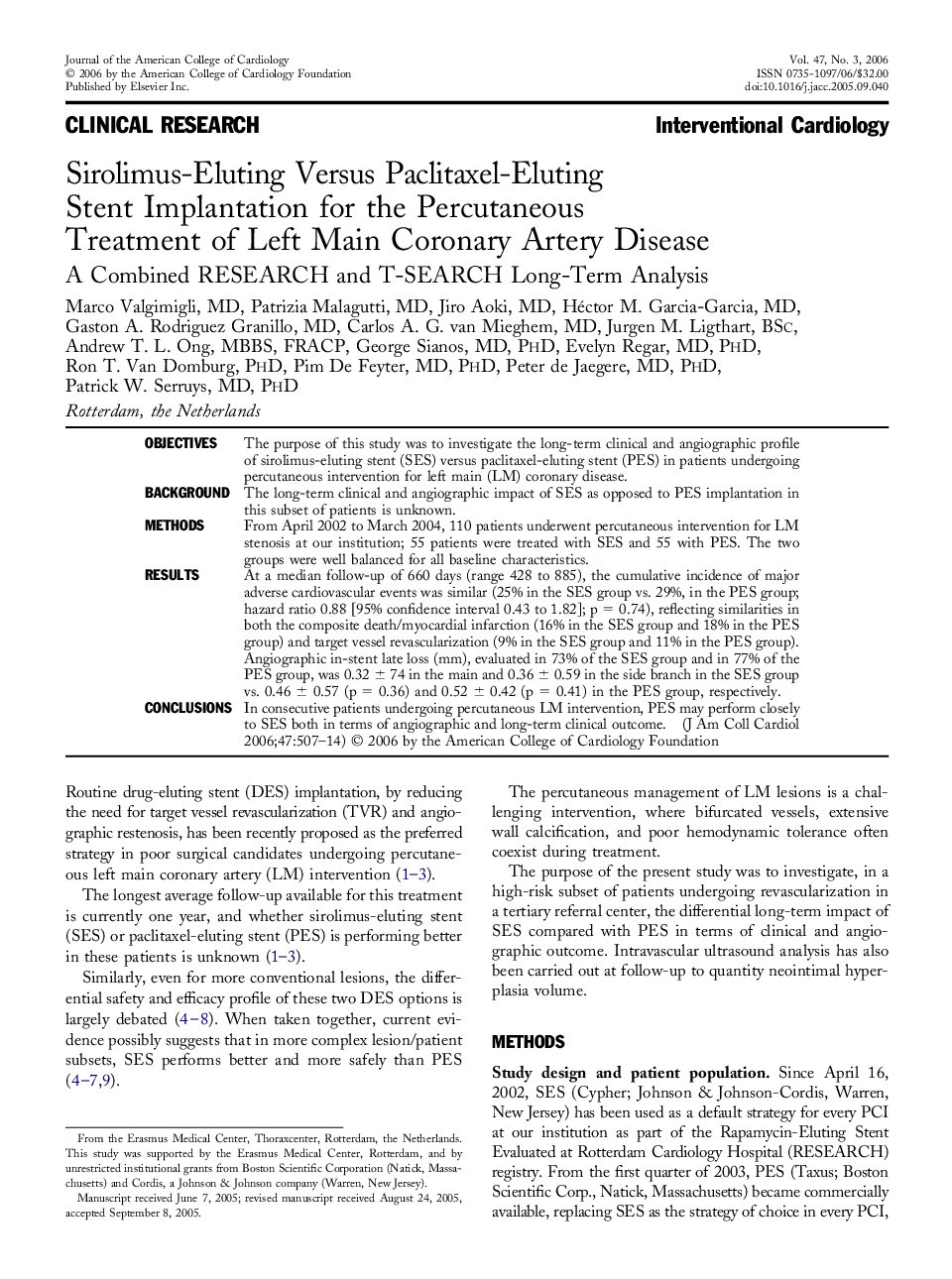| Article ID | Journal | Published Year | Pages | File Type |
|---|---|---|---|---|
| 2955488 | Journal of the American College of Cardiology | 2006 | 8 Pages |
ObjectivesThe purpose of this study was to investigate the long-term clinical and angiographic profile of sirolimus-eluting stent (SES) versus paclitaxel-eluting stent (PES) in patients undergoing percutaneous intervention for left main (LM) coronary disease.BackgroundThe long-term clinical and angiographic impact of SES as opposed to PES implantation in this subset of patients is unknown.MethodsFrom April 2002 to March 2004, 110 patients underwent percutaneous intervention for LM stenosis at our institution; 55 patients were treated with SES and 55 with PES. The two groups were well balanced for all baseline characteristics.ResultsAt a median follow-up of 660 days (range 428 to 885), the cumulative incidence of major adverse cardiovascular events was similar (25% in the SES group vs. 29%, in the PES group; hazard ratio 0.88 [95% confidence interval 0.43 to 1.82]; p = 0.74), reflecting similarities in both the composite death/myocardial infarction (16% in the SES group and 18% in the PES group) and target vessel revascularization (9% in the SES group and 11% in the PES group). Angiographic in-stent late loss (mm), evaluated in 73% of the SES group and in 77% of the PES group, was 0.32 ± 74 in the main and 0.36 ± 0.59 in the side branch in the SES group vs. 0.46 ± 0.57 (p = 0.36) and 0.52 ± 0.42 (p = 0.41) in the PES group, respectively.ConclusionsIn consecutive patients undergoing percutaneous LM intervention, PES may perform closely to SES both in terms of angiographic and long-term clinical outcome.
